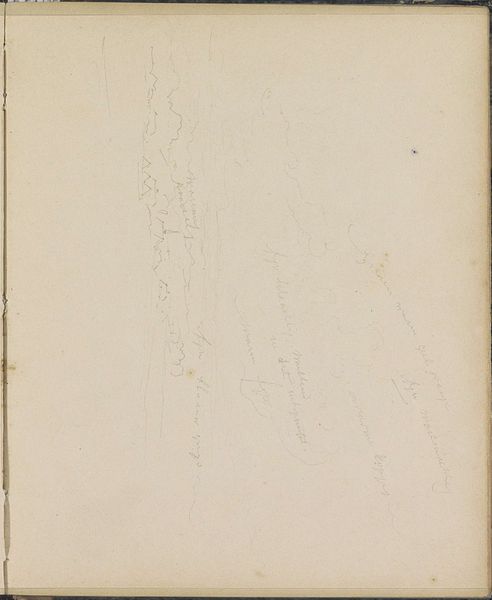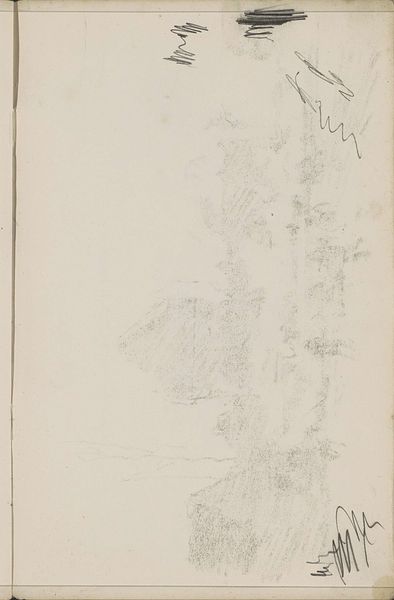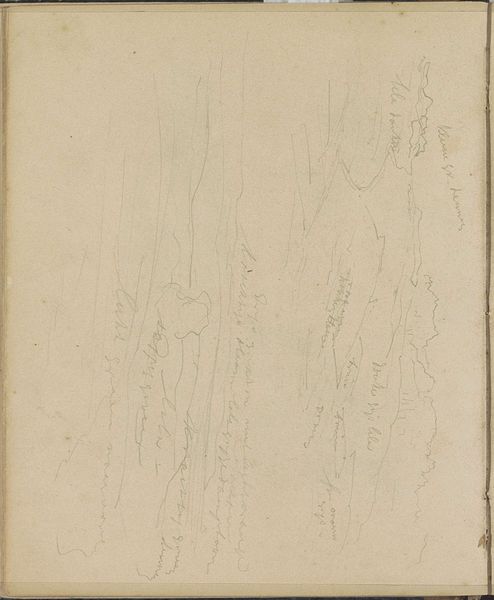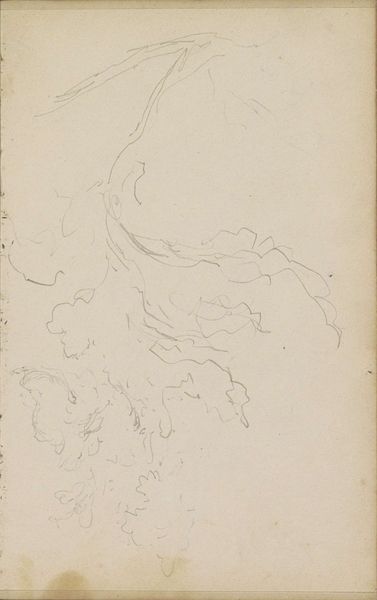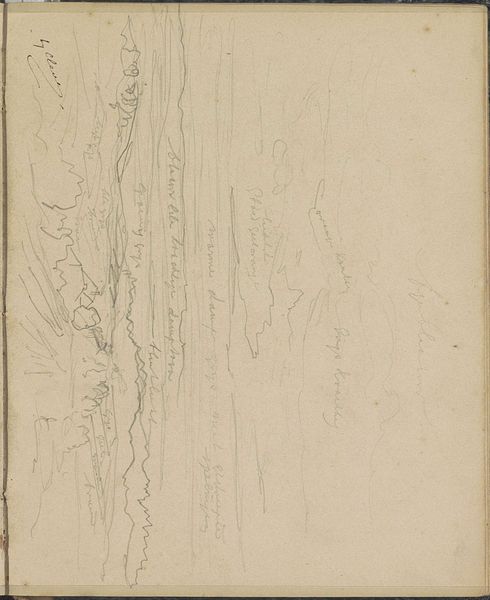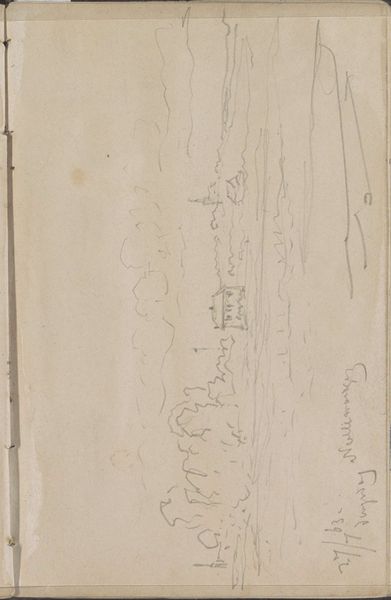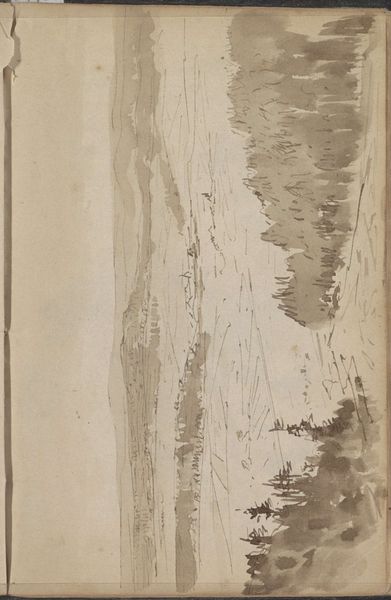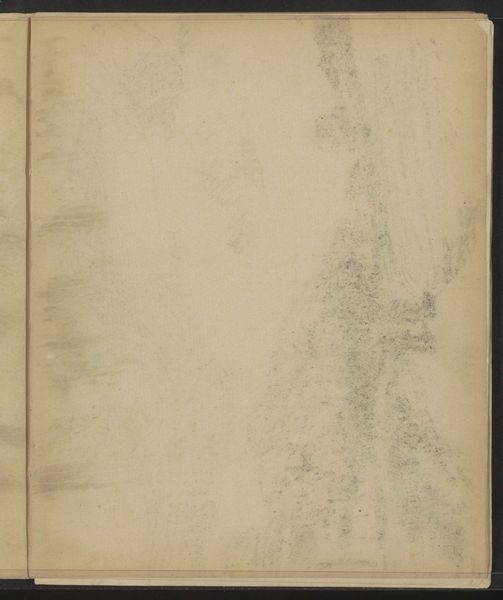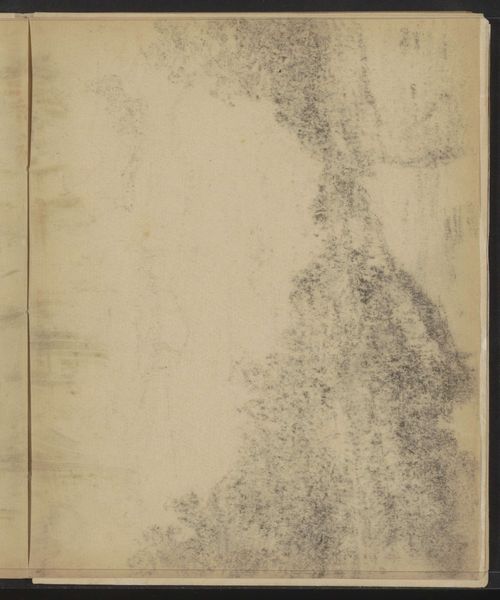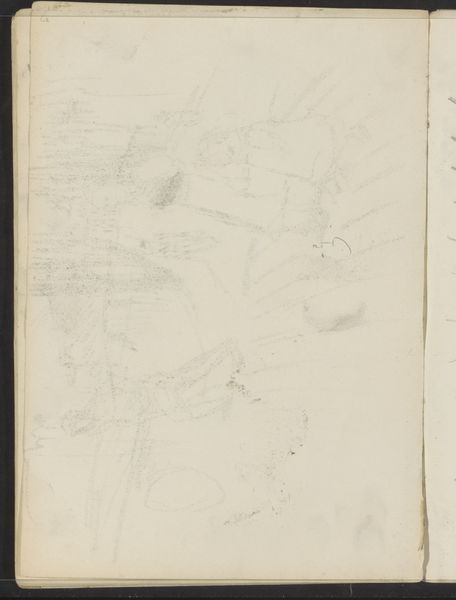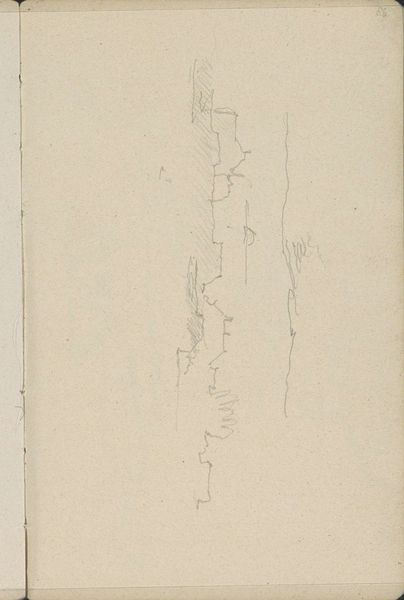
drawing, pencil
#
drawing
#
water colours
#
landscape
#
romanticism
#
pencil
Copyright: Rijks Museum: Open Domain
Curator: We’re looking at “Landschap,” or “Landscape,” by Johannes Tavenraat, created between 1841 and 1853. It's a drawing with pencil and watercolor, currently held in the Rijksmuseum. It feels quite fragile, almost ephemeral, because of the light touches. What strikes you about it? Editor: The sketchiness really grabs me. It seems less about depicting a specific place and more about capturing an impression. What can you tell me about this approach? Curator: I see it as Tavenraat grappling with the materials themselves. Look at the paper; it's clearly been handled. The pencil lines aren't just descriptive; they're explorations of pressure and texture. Think about where the materials came from—the pencil's graphite mined, the paper pulped from trees. These weren’t neutral choices. How do these materials shape our understanding of 'landscape' itself? Editor: So, you're saying the drawing isn't just *of* a landscape, but an artifact *of* a landscape too, in a way? Curator: Precisely. It challenges our romantic notions of untamed nature by revealing the hand, and indeed the labor, involved in representing it. Tavenraat uses industrial products to convey an image of nature; do we then reflect on the transformation or manipulation required to depict "nature?" Editor: That's fascinating. I hadn't considered how the materials themselves become part of the narrative. Curator: Exactly! This wasn’t just about pretty scenery. The means of production - the accessibility of pencils and paper, the cultural value placed on sketching - all shaped how Tavenraat saw and portrayed the world. And, thus, reshapes how we, in turn, see that era of the world, too. Editor: That completely changes how I see landscape drawings now. Curator: And that's the beauty of looking closely at the material conditions of art making.
Comments
No comments
Be the first to comment and join the conversation on the ultimate creative platform.
